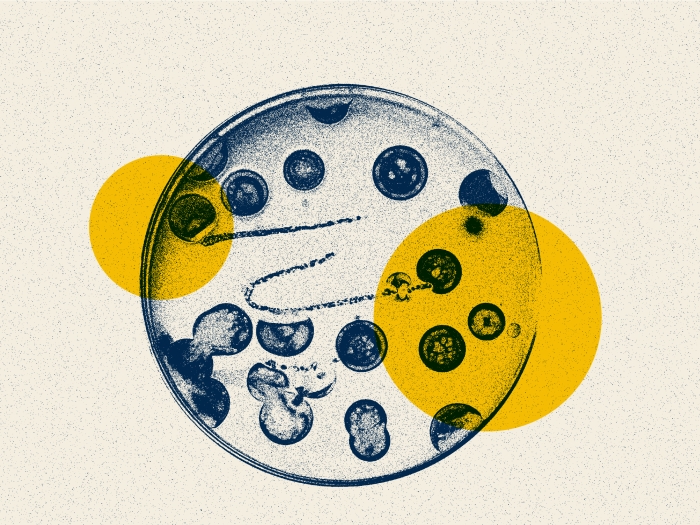When it comes to understanding the human body, seeing is believing. Now, a new website allows teachers and students anywhere to look through a “virtual microscope.”
7:00 AM
Author |

A medical student in Michigan. A nursing student in Ghana. An anatomy professor in Brazil. A researcher in Australia. All need to learn — or teach — about the human body at the most basic level.
MORE FROM THE LAB: Subscribe to our weekly newsletter
For all of them, nothing beats a microscope-level view of healthy organs, tissues and cells. That view sets the stage for learning how these structures change because of mutation, disease or the passage of time — and how to prevent, slow or stop those changes.
Until recently, only those with access to microscopes and libraries of glass slides, each with a tiny sample of preserved tissue, were able to study cells and tissues at the microscopic scale.
Now, students and teachers everywhere can see the human body in fine detail, thanks to "virtual microscopy," which has opened the body's secrets to a much wider audience of students and teachers.
The University of Michigan Medical School was one of the first places to use virtual microscopy for teaching students about normal tissue morphology, a field called histology.
The U-M histology teaching team digitized hundreds of slides from the U-M collection for use by the university's medical and dental students. Later, these images were made freely accessible online on the U-M's histology website and "Histology Lite – SecondLook™," a free mobile app.
In any given week, tens of thousands of people from more than 170 countries visit the site. With a few clicks, anyone can zoom in to view images at higher and higher magnification, ranging from an entire organ down to a single cell.
In recent years, other universities and research institutes have also digitized their histology glass slide collections.
Virtual microscopy is like Google Earth, just at the microscopic scale.Michael Hortsch, Ph.D.
A new database
Now, a new website called the Virtual Microscopy Database has launched to bring these collections together and make it easier to find high-quality images of particular structures.
SEE ALSO: Bioartography Finds Beauty Through a Microscope
With a grant from the American Association of Anatomists, the VMD is now accepting free registrations from educators or researchers affiliated with an academic institution who want to view, download and use digital microscopic images.
Michael Hortsch, Ph.D., from the U-M Medical School and colleagues from the University of Colorado and Drexel University, led the effort to pull together images from many institutions. They will introduce the new VMD resource at the Experimental Biology meeting in Chicago later this month.
"I want my students to analyze and interpret micrographs they have not encountered previously in lectures, labs or textbooks. The VMD gives me a rich collection of images that I can use for tests and examinations," says Hortsch, an associate professor of cell and developmental biology and of learning health sciences who teaches histology to all U-M medical and dental students as well as graduate and senior undergraduate students.

The global potential of the resource also excites Hortsch.
"I'm frequently asked for help by colleagues from all over the world, who want to use virtual microscopy to teach their students histology, so I realized that there is a great demand for high quality microscopic images in a digital format," he says. Over the past few years, he has shared the entire contents of the U-M virtual microscopy library with colleagues worldwide — to the tune of more than 200 gigabytes of data each time.
"As no single slide collection is complete and flawless, pooling image collections from many different schools and making them available to all histology educators and researchers in form of an electronic database is a perfect solution."
He hopes that the new resources will help more schools, colleges and universities — including those in the developing world — avoid having to purchase and maintain microscopes and glass slides.
"Virtual microscopy is like Google Earth, just at the microscopic scale," he says. "It's not just about looking at pictures. It's also a way to connect structure with function. Because we are visual animals, it's easier for us to understand what is happening inside our bodies if we can see it with our own eyes."
Top photo: A view of the "folds" of the brain's second-largest region, the cerebellum. Using virtual microscopy, educators and students can zoom into any region of such images, going from an organ-level to a tissue-level to a cell-level view.
(Images credited to: Michigan Histology and Virtual Microscopy Learning Resources)

Explore a variety of health care news & stories by visiting the Health Lab home page for more articles.

Department of Communication at Michigan Medicine
Want top health & research news weekly? Sign up for Health Lab’s newsletters today!





